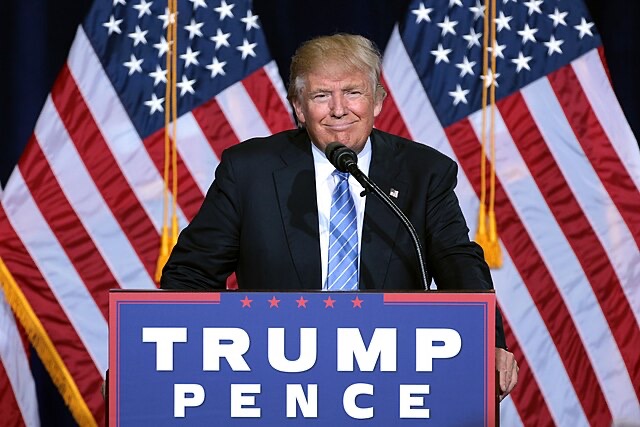In a move that has sent shockwaves through global trade networks, the White House confirmed that more than 50 countries have already reached out to initiate talks on tariffs following President Donald Trump’s latest economic policy shift. The sudden surge in diplomatic engagement comes on the heels of Trump’s April 2025 announcement of a sweeping 10% universal tariff on all imports—an aggressive effort to rebalance America’s trade relationships and strengthen domestic industries.
What began as a bold economic maneuver is now turning into a high-stakes global negotiation frenzy. Countries from every continent are lining up to seek exemptions, offer concessions, or restructure trade deals with the U.S. to avoid the financial sting of these new import taxes.
As pressure mounts internationally and domestically, the Trump administration insists that the tariffs are not just a show of strength—they’re a strategic plan to reestablish America’s economic independence, support manufacturing, and protect national interests.
But with global leaders scrambling and Wall Street watching closely, many are asking: Will these new tariffs spark a trade war or usher in a new era of deal-making?
The April 2025 Tariff Announcement
Trump’s Declaration of a Universal 10% Tariff
On April 2, 2025, President Trump stood at the podium in the White House Rose Garden and made a declaration that instantly reverberated across financial markets, trade ministries, and boardrooms worldwide. Effective immediately, the United States would impose a 10% tariff on all imported goods, regardless of origin or product type.
This universal tariff marks one of the most significant moves in U.S. trade policy history, cutting across industries from electronics and automobiles to food and pharmaceuticals.
While the 10% baseline applies to all imports, Trump’s plan also includes even higher rates for roughly 60 countries with which the U.S. has the largest trade deficits. These nations—ranging from China and Germany to Vietnam and Mexico—could face tariffs of 20% or more on select goods.
Trump described the policy as a “national emergency response” designed to protect American jobs and rebuild the country’s industrial base. He stressed that the era of “being taken advantage of” was over, stating, “For too long, we have let our trading partners walk all over us. Those days are done.”
Elevated Rates for High-Deficit Nations
Beyond the blanket tariff, the administration is targeting specific countries for harsher penalties based on the size of their trade surplus with the U.S. The reasoning? These deficits, Trump argues, are evidence of unfair trade practices, currency manipulation, and exploitative pricing.
China, as expected, tops the list, followed closely by the European Union, Japan, and Mexico. Each of these countries now faces a steep choice: negotiate a new deal with Washington—or pay the price at the border.
The message is clear: America is open for business, but only on its own terms.
A Global Response: 50+ Countries Reach Out
Nations Want Exemptions or Reduced Rates
Within days of the announcement, the White House was inundated with calls and formal requests from foreign governments. According to Kevin Hassett, Director of the National Economic Council, “More than 50 countries have contacted us, asking for talks. They want to make deals, they want to avoid the tariffs.”
These discussions are happening behind closed doors, but insiders suggest they span the globe—from Europe and Asia to Latin America and Africa. Countries are proposing new trade terms, agreeing to import more American goods, and even offering regulatory reforms to earn exemptions or favorable terms.
This overwhelming response, administration officials say, proves the tariffs are already working.
Surge in Diplomatic Contact with the White House
Senior trade negotiators have been holding marathon talks in Washington and abroad. At least a dozen ambassadors have met with U.S. officials in recent days, and working groups are forming to hammer out bilateral deals that could preempt full tariff implementation.
One official from the Commerce Department described the mood as “tense but productive.” Another said, “Everyone wants to avoid being in the crosshairs. They’re motivated, and that gives us leverage.”
While few details of the negotiations have been released, reports suggest that energy, automotive, agricultural, and tech sectors are the focal points for most talks.
What the Tariffs Mean for Global Trade
Impact on Exports to the U.S.
For countries that rely heavily on exporting to the U.S., these tariffs represent a major economic threat. Take Germany, for example—home to auto giants like BMW and Volkswagen. A 10-20% tariff on vehicles could severely disrupt supply chains and force companies to raise prices or relocate production.
Asian tech exporters face similar risks, especially in countries like South Korea, Taiwan, and Malaysia. For them, U.S. demand is a critical driver of GDP. Even agricultural exporters like Brazil and Argentina are suddenly looking at new trade headwinds.
Businesses across the globe are now recalculating costs, shipping routes, and profit margins in light of the new tariffs.
Pressure on Supply Chains and Industries
The ripple effects don’t end with exporters. Multinational companies with cross-border supply chains—especially in manufacturing, electronics, and retail—are bracing for higher costs and logistical headaches. Importers in the U.S. may soon be passing costs on to consumers, raising fears of inflation and reduced purchasing power.
From iPhones and televisions to auto parts and clothing, the tariffs could touch nearly every household and industry.



